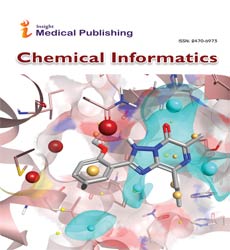Abstract
Identification of novel drug targets and lead compounds in Anthrax and Pneumonia causing pathogens using an In Silico approach
Increased resistance to antibiotics and delay in treatment significantly reduce the chances of survival for anthrax and pneumonia patients. In the present study comparative proteome analysis and virtual screening approaches were used to discover novel therapeutic drug targets and antibacterial lead compounds for Bacillus anthracis and Bacillus cereus strains responsible for causing anthrax and pneumonia, respectively. The employed systematic workflow identified a total of 803 proteins, within the genomes of the aforesaid pathogens, with no significant sequence similarity to human proteins. Out of 803 non homologous proteins, 10 were found to be essential for the survival of pathogens. Further based on number of criteria including essentiality, druggability and availability of structural information thioredoxin reductase (TrxR) was shortlisted as the potential drug target. In silico docking studies with three open source docking programs identified four potential inhibitors of bacterial TrxR.. In conclusion this study resulted in identification of a novel drug target (Thioredoxin reductase) for Bacillus anthracis and Bacillus cereus previously not known of these pathogenic microorganisms) and potential inhibitors of TrxR that could facilitate in selection of drug leads for entry into drug design and production pipelines. . In addition, the methodology used can be applied for the identification of new drug targets and drug leads in case of other pathogenic microorganisms.
Author(s):
Varun Khanna, Ashutosh Kumar, Rishi Shanker
Abstract | Full-Text | PDF
Share this

Google scholar citation report
Citations : 173
Chemical Informatics received 173 citations as per google scholar report
Abstracted/Indexed in
- Google Scholar
- China National Knowledge Infrastructure (CNKI)
- Directory of Research Journal Indexing (DRJI)
- WorldCat
- Geneva Foundation for Medical Education and Research
- Secret Search Engine Labs
- CAS (Chemical Abstracting Services)
Open Access Journals
- Aquaculture & Veterinary Science
- Chemistry & Chemical Sciences
- Clinical Sciences
- Engineering
- General Science
- Genetics & Molecular Biology
- Health Care & Nursing
- Immunology & Microbiology
- Materials Science
- Mathematics & Physics
- Medical Sciences
- Neurology & Psychiatry
- Oncology & Cancer Science
- Pharmaceutical Sciences

